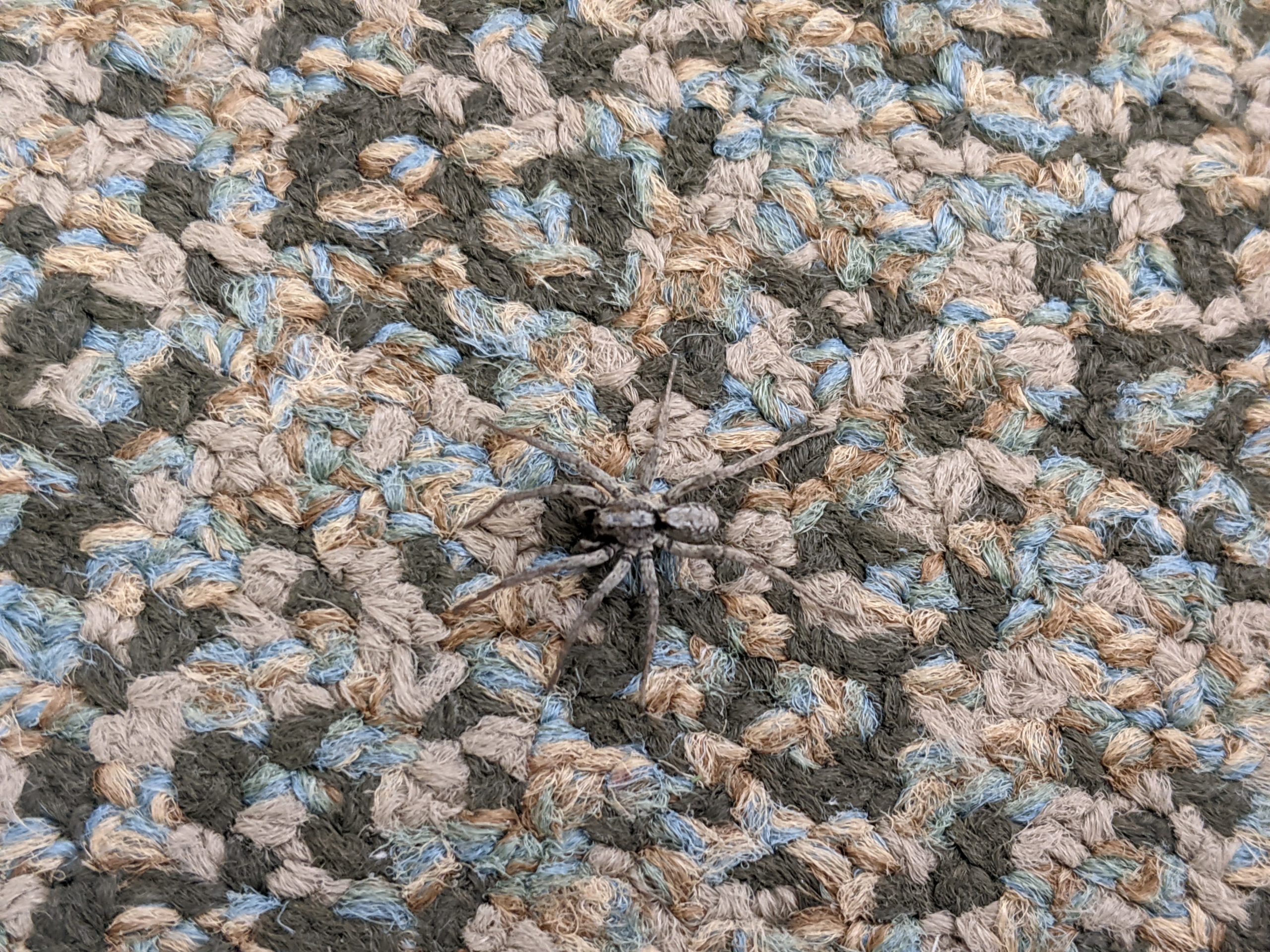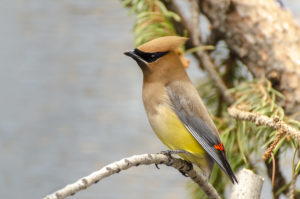By Marissa Hansen
Spiders have a reputation for being creepy and spooky, but there’s a lot to love about these misunderstood creatures. While these animals have been portrayed as creepy and deadly in movies and tv shows, very few species in Alberta are poisonous. Spiders in this province are actually quite harmless, and as a bonus are also good for the environment!
Spiders eat lots of different kinds of insects that can act as pests, including roaches, earwigs, mosquitoes, flies and clothes moths. Having spiders around helps to reduce the numer of bug bites, and protects your garden plants too. You can thank spiders for your thriving strawberry plants or lack of bug bites this year!
Alberta’s Spider Species
In Alberta we have over 580 species of spiders, with a typical city backyard hosting up to 20 different kinds! While a lot of people think of spiders as insects, they are in a different family known as the arachnids. Arachnids only have two body parts (head and abdomen), along with eight legs. By contrast, insects have three body segments (head, thorax, and abdomen) and only six legs.
Some of the more common or famous Alberta species include:
- Common House Spiders – These are very small spiders (5 to 8 mm) found in houses all around the world. They are distinguishable by their teardrop egg sacs which hold 100-500 eggs inside. These little guys stay out of trouble and you most likely won’t even notice they’re there.
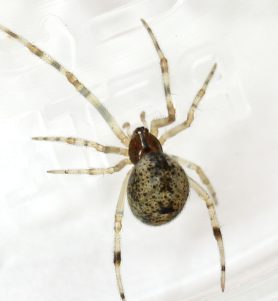
- Garden Spider – Females of this kind of spider average 19 to 28 millimeters in body length and are most commonly found in backyard gardens in Canada, the United States, and Mexico. These spiders use venom to immobilize prey, but this venom is completely harmless to humans!
- Jewel spider – Jewel spiders have a pattern on their faces that resemble a jewel or a cat face. These spiders can grow up to 4-25mm and some even grow to be the size of a toonie! They are harmless to humans and try to escape from any potential threats but they may look more threatening than other types of spiders due their chubby patterned body.
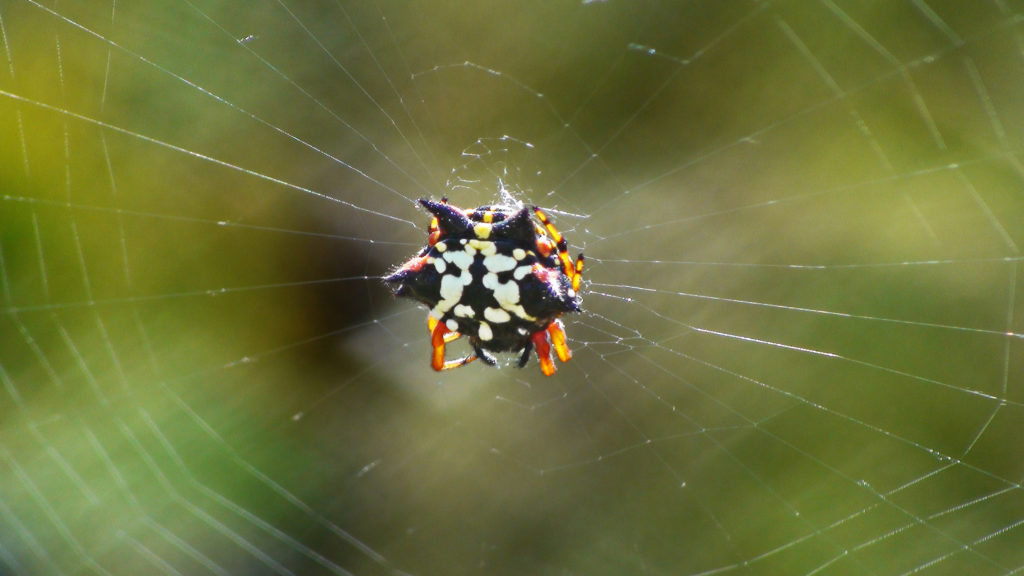
- Wolf spiders – These are larger hairier spiders that tend to be tan, brown, or any other color that helps them camouflage. They are mostly nocturnal, and are sometimes mistaken for tarantulas (even though they’re much smaller!). While typically not a threat to humans, if you were to be bitten by a wolf spider, some swelling and irritation may occur.
- Black widow spider – No, not the Marvel Superhero. These spiders are one of the few venomous species found in Alberta. They can be distinguished by their red abdomen markings on their otherwise black bodies. While sightings are rare if you do see one, please admire from a distance. If unfortunately, you do get bitten, remain calm, apply ice to the area, and seek medical attention immediately.
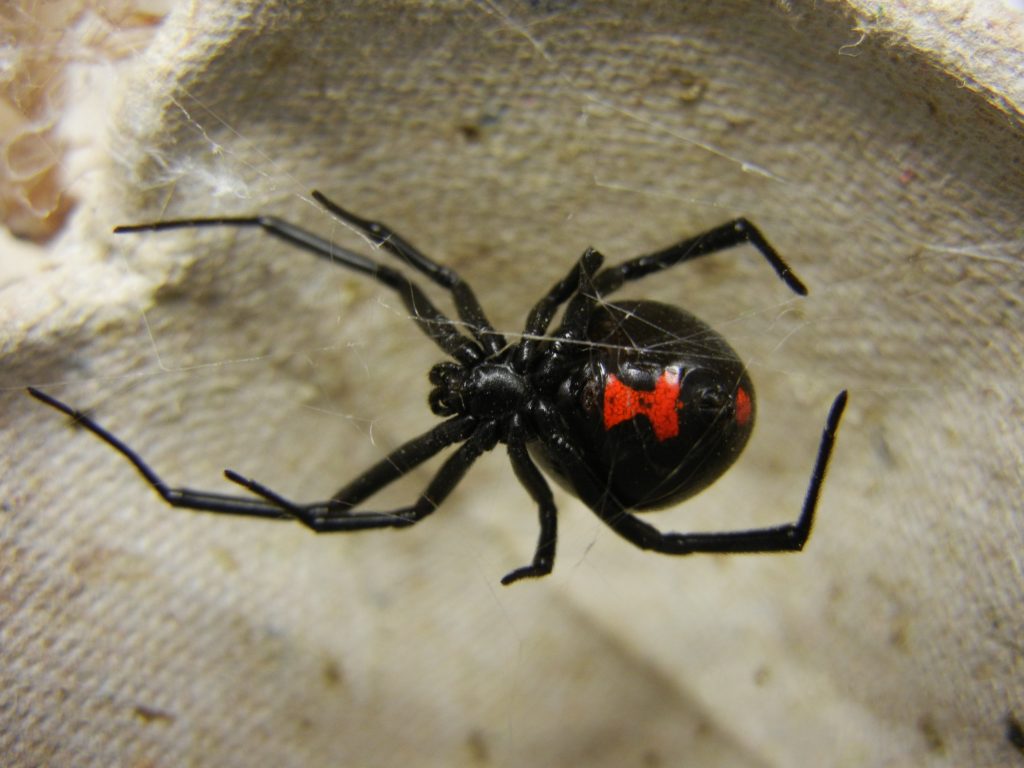
Overall spiders aren’t as spooky as they seem, and we need to take action in helping our 8-legged friends!
How can you help?
One of the best ways to help spiders is to not destroy webs. These webs help catch pests and allow some types of spiders to catch their food. Some spiders such as garden spiders use their web as a source of nutrients by eating their web. Ruining a spider’s web could cause potential harm to the spider as it cuts off its food source, it would be like if someone came into your home and stole your fridge.
Do not stomp on spiders when you see them. If they are in your home, take them outside. While it might be scary to see a creepy crawly 8-legged creature on your floor, refrain from automatically squashing it with the first slipper you can find.
Finally, talk to your friends and family about the benefits of having spiders around! The more people learn about spiders, the less scary they seem, and the more people will be around to help protect them!
References
1. SBM Life Science Corp. (n.d.). Spiders in the House – Friend or Foe? Bioadvanced. https://www.bioadvanced.com/articles/controlling-spiders-house-friend-or-foe.
2. Betkowski, B. (2019, July 9). Why you shouldn’t kill your friendly neighbourhood spiders. University of Alberta. https://www.ualberta.ca/folio/2019/07/why-you-shouldnt-kill-your-friendly-neighbourhood-spiders.html.
3. Hawkinson, C. (2006). Beneficial’s in a Garden- Spiders: An Overview. Beneficial spiders in the landscape: #22 General Overview of Spiders. https://hortsciences.tamu.edu/galveston/beneficials/beneficial-22_spiders-overview.htm.
4. Health Canada. (2013, June 4). Earwigs. Canada.ca. https://www.canada.ca/en/health-canada/services/pest-control-tips/earwigs.html.
5. CBC/Radio Canada. (2018, July 4). When it comes to spiders in Alberta, you have lots to love and little to fear. CBC News. https://www.cbc.ca/news/canada/edmonton/alberta-spiders-lots-of-love-little-to-fear-1.4733872.
6. Parasteatoda tepidariorum(Common House Spider). Spider ID. (n.d.). https://spiderid.com/spider/theridiidae/parasteatoda/tepidariorum/.
7. Yellow Garden Spider. National Wildlife Federation. (n.d.). https://www.nwf.org/Educational-Resources/Wildlife-Guide/Invertebrates/Yellow-Garden-Spider.
8. Hoang, L. (2012, August 30). Big jewel spiders nothing to worry about, says city entomologist. Edmonton. https://edmonton.ctvnews.ca/big-jewel-spiders-nothing-to-worry-about-says-city-entomologist-1.935390.
9. Kidadl. (n.d.). Cat-Faced Spider Facts. Free Ideas For Family Fun & Learning. https://kidadl.com/animal-facts/cat-faced-spider-facts.
10. Szalay, J. (2014, December 25). Wolf Spiders: Bites, Babies & Other Facts. LiveScience. https://www.livescience.com/41467-wolf-spider.html.
11. Wolf Spiders: Facts, Identification & Control: Terminix. Terminix.com. (n.d.). https://www.terminix.com/pest-control/spiders/wolf-spider/.
12. Orkin. (2021, March 17). How to Identify Black Widow Spiders: Spider Facts: Orkin. Orkin.com. https://www.orkin.com/other/spiders/black-widows.
13. Black Widow Spider Bite. HealthLink BC. (n.d.). https://www.healthlinkbc.ca/health-topics/tm6498spec.

